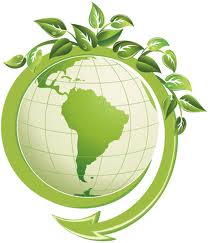
Via Flickr©
The growing demand for ‘green’ scents from the discerned consumers is already leading to some worrying supply issues caused by scarcity of raw materials worldwide and prices hitting an all time high. Adding to the confusion caused by the lack of clarity about the term ‘natural’ and the unsettling increase of unethical suppliers compromising on quality, we may wonder about the sustainability and future of natural perfumery and we can relate to the concerns of the eco-consumers.
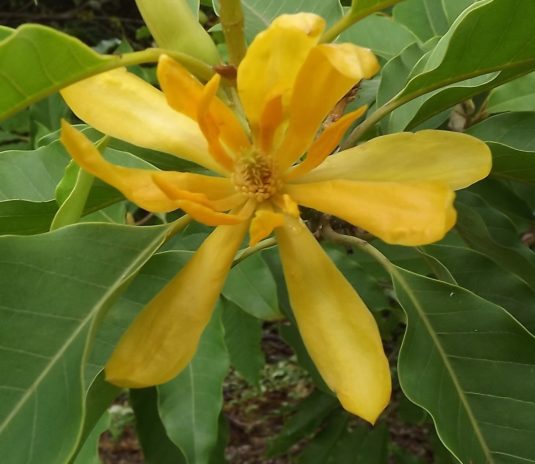
Gold Champaca by Anya©
What if you could use the plants and flowers from your garden, vertical garden or your backyard to create your own perfumes and scented products? Think not only about alcohol-based perfumes but oil-based scents, home scents, body scents and floral waters (called ‘hydrosols’).
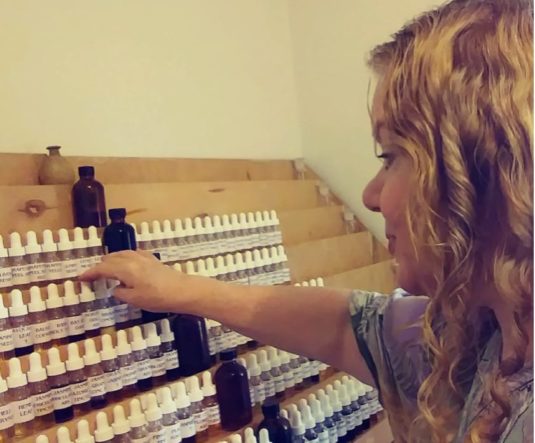
Anya McCoy photo from Anya
Anya McCoy of Anya’s Garden, internationally recognised natural perfumer and one of the world pioneers in the revival of natural perfumery is taking you on an exciting journey to becoming a ‘botanical alchemist’ or ‘perfume gardener’ with her new book Homemade Perfume, released at the end of July 2018.
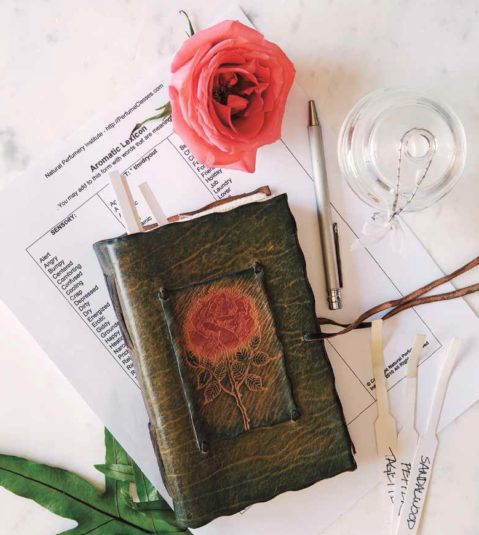
Recording your impressions of an essential oil or absolute is necessary for creating Scent Memory. Homemade Perfume includes directions for creating charts for the recordkeeping-Anya McCoy©
Homemade Perfume is a rather comprehensive DIY ‘Treatise’’ on the Art of traditional plant extraction methods, taking you through 6 clearly structured chapters, supported by beautiful pictures. Anyone with the slightest interest in the traditional methods of perfume-making will appreciate how easy it is to apply the guidelines that Anya McCoy generously shares thanks to her 40+ years of experience. Many of the methods presented in this book sadly disappeared in mid 20th century because it became impossible for manufacturers to deal with the considerable labour force, costs and length of time needed. Homemade Perfume might well turn out to be a new channel that will inspire many people to revive the lost tradition. The tips and secrets will get the reader comfortable with crafting their own fragrances, by using simple tools from the kitchen and flowers or plants that grow in our gardens or are readily available from numerous botanical sources.
Chapter 1 is a detailed overview of the basic methods of extraction and the essential utensils and materials needed. Importantly, Anya highlights the safety precautions that ‘home alchemists’ need to follow particularly when handling alcohol and sterilising tools.
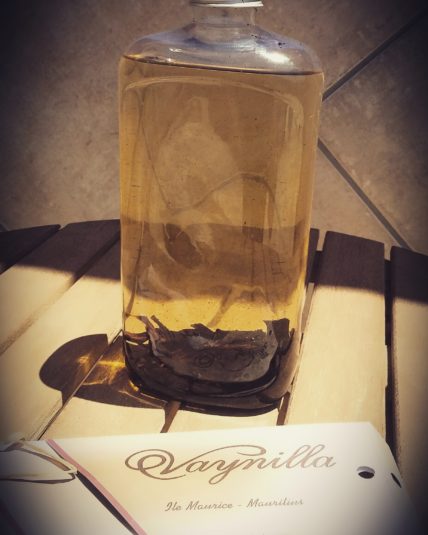
Vanilla tincture-Isabelle Gelle©
Chapter 2 is an introduction to the two oldest methods for plant extraction: ‘tincturing’ and ‘infusing’, highlighting the differences based on the solvent used (alcohol versus carrier oil). Here we learn, for example, that for perfumery purposes, you should use a lower proof solvent and leave the plant material to macerate for 24 hours rather than for weeks onwards. Anya also describes the method of ‘recharging’ tinctures and infusions by ‘straining the botanical from the solvent and replacing it with more botanicals’.
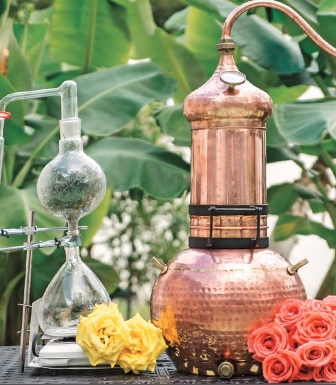
Basic instructions on steam distillation units (left) and steam- and hydro- combination units are included, with the caveat to obtain specific information on each unit from the seller. Image on left from Heart Magic, unit on right from The Essential Oil Company.-Anya McCoy
Chapter 3 covers distillation which has the benefit of yielding both essential oils and hydrosols. Although you could adapt a pressure cooker, a distillation unit or still is recommended, particularly if you wish to extract essential oils due to yields being usually low. Appendix 3 on page 183 recommends a list of suppliers for these units (and for other materials referred to in this book). Until you invest in such a unit, you can try your hand at the simpler hydrosol distillation.
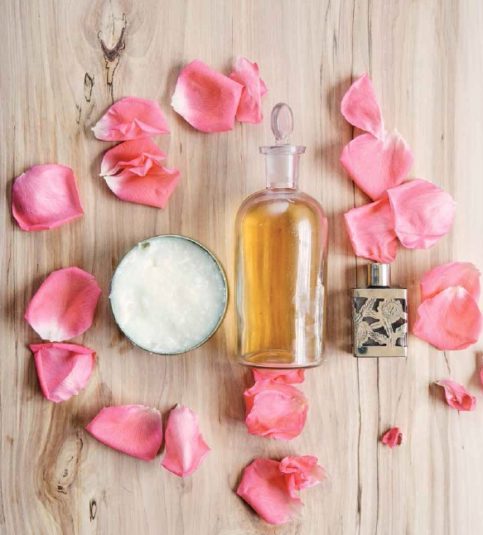
Pictured left to right, products from enfleurage: scented pomade, alcohol extrait, absolute oil. Anya McCoy
The fourth chapter (also the longest) is the most fascinating one as it explores cold or hot ‘enfleurage’, a traditional method that allows to draw the scent molecules into oil or semi-solid fats from vegetable (e.g. Shea nut butter) or animal origin (e.g. lard) or into powders (e.g. tapioca or cornstarch). Those readers who already have their flower gardens will definitely enjoy the process of enfleurage. The bonus with enfleurage is that it is one the less wasteful methods of extraction. After washing the fat impregnated with the scent with ethanol, Anya explains how to incorporate the semi-solid leftover called ‘pomade’ into body butters, solid perfumes or soaps. With the pomade, you can also obtain a perfume ‘extrait’ that essentially is the scented alcohol separated from the semi-solid pomade. From there on, through evaporating the alcohol of the extrait, ‘absolute’ oil is extracted. Despite the lengthy process, enfleurage will be a most rewarding activity if you are an aficionado of the magic of Nature.
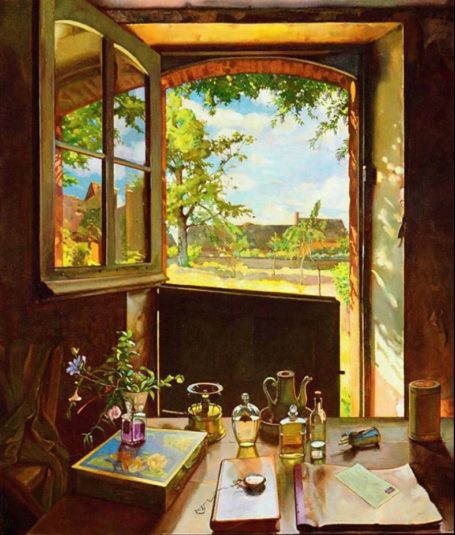
Painting Open Door on a Garden by Konstantin Somov 1934©
In chapter 5, the various extractions can be applied into functional products including perfumes for body, bath and home. After introducing how perfumes are made and how to talk ‘perfumes’, using aromatic descriptive words and images, Anya shares some simple recipes or you may take this opportunity to unleash your creative mind and experiment with the making of scented products, drawing upon the numerous sampling examples and supporting illustrations given in this book.
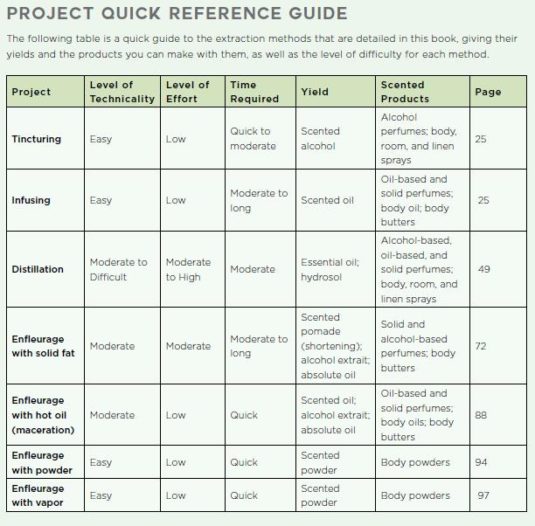
The Homemade Perfume Project Quick Reference Guide helps the reader quickly figure out which level of project they want to experiment with.
I found chapter 6 very informative as it contains very details briefs about 36 fragrant flowers and plants including growing guidelines, preparation for perfumery with process key charts about the time needed for the extraction of these botanicals depending on the method you decide to choose.
I enjoy Homemade Perfume for the simplicity of explanations and instructions despite the complexity of the various extraction processes cited.It is easy to find the page referring to the process of interest and both imperial and metric measurements are mentioned which facilitates the functional application for those of us who are not familiar with the American imperial system. This book is a rare reference guide that will no doubt inspire all Nature lovers who do not necessarily want to turn their passion for scents into some commercial business or those gardeners who will be able to make use of their seasonal flowers and herbs as scented gifts for themselves, friends and family.
Disclosure: I purchased my copy of the book from Amazon

Isabelle Gellé, Natural Perfumer for Isabelle Gellé Parfums and Parfumeurs de Monde– Guest Contributor
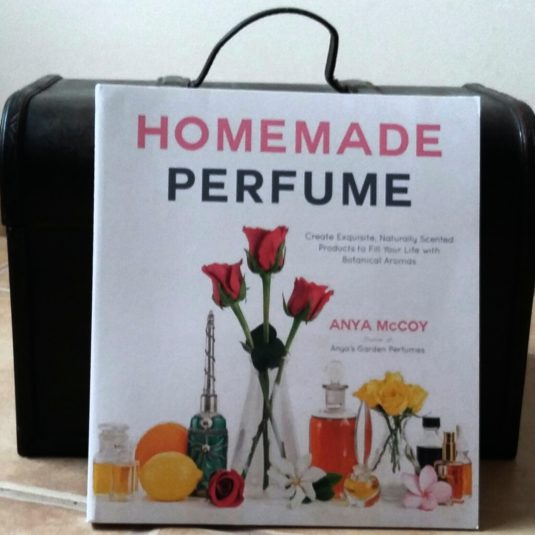
Homemade Perfume Book photo by Isabelle
Thanks to Anya McCoy we have a signed copy of Homemade Perfume for a registered reader anywhere in the world. You must register to be eligible. Please leave a comment with what you enjoyed about Isabelle’s review of Homemade Perfume and if you have wanted to ever create your own Homemade Perfume. Draw closes 8/29/2018
We announce the winners only on site and on our Facebook page, so Like ÇaFleureBon and use our blog feed … or your dream prize will be just spilled perfume.
